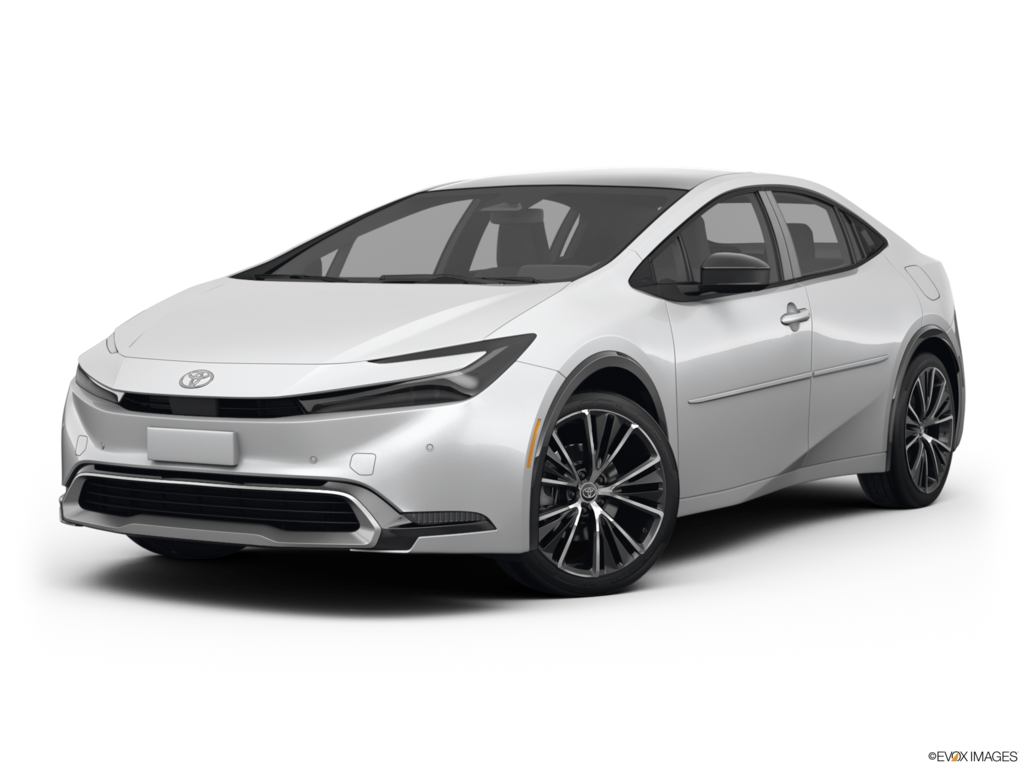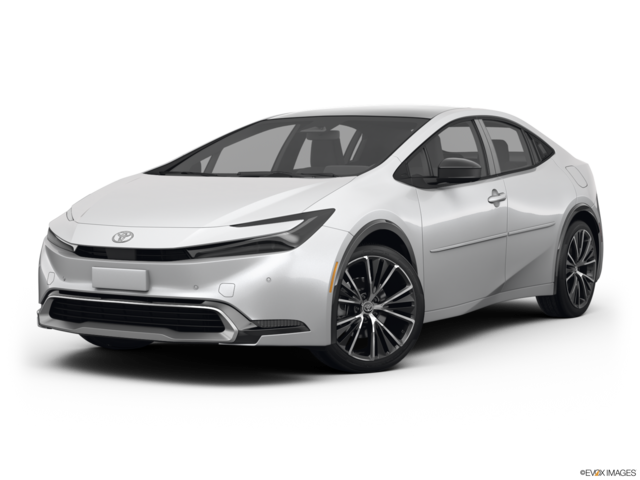
Fifth generation Toyota Prius
When Toyota introduced the next-generation Prius for the 2023 model year, it boasted a new, sleek design that made it the most stylish Prius ever. The new Prius was built on an all-new platform that reduced weight and increased rigidity, giving it a wider stance and improved driving dynamics.
The new Prius’s four-cylinder hybrid powertrain received a significant performance boost over the outgoing version, boasting 60% more horsepower and an available upgraded all-wheel-drive system. Not only did the Prius get more power, it was also more fuel-efficient, delivering up to an EPA-estimated 57 mpg combined
.The fifth-generation Prius also benefited from a complete interior makeover, with a clean dashboard design highlighted by an available 12.3-inch touchscreen display. Wireless Apple CarPlay® and Android Auto™ were standard, and customers could upgrade to the JBL® premium audio system. Toyota Safety Sense™ 3.0 came on every new Prius, featuring adaptive cruise control, lane departure alert, and road sign assist.
Model highlights
More powerful hybrid system
Sleek new look
Wireless Apple CarPlay®/Android Auto™ on every trim
Improved fuel efficiency
Available 12.3-inch infotainment display
Fourth generation Toyota Prius
Since it first arrived in America, the Toyota Prius’s primary focus has been fuel efficiency. When the redesigned Toyota Prius arrived on the scene in 2016, its EPA-estimated 56 mpg
made it the most fuel-efficient non-plug-in vehicle in America. Improved efficiency was at least partly owed to the new electronically controlled variable transmission and improved brake regeneration tech, as well as the updated hybrid system featuring a 1.8-liter four-cylinder engine.Longer and wider than its predecessor, the sleeker fourth-gen Prius featured a roomier interior with redesigned seats offering better support and improved comfort. The new design also provided more storage spaces in the cabin as well as a new wireless phone charger.
Starting in 2017, Toyota equipped every Prius with its Toyota Safety Sense™ suite of advanced driver-assist features, including automatic emergency braking, lane departure alert with steering assist, and automatic high beams. Higher trims also got full-speed adaptive cruise control and rear cross-traffic alert.
Model highlights
Improved fuel economy
Available all-wheel drive (added in 2019)
Available 11.6-inch display (added in 2019)
Android Auto™ compatibility (added in 2021)
Advanced driver-assist features
Changes by year
Latest generation from 2023 - present
2025 Toyota Prius
2024 Toyota Prius

2023 Toyota Prius

Highlights
Complete redesign with sleeker styling
Updated interior
More powerful hybrid powertrain
Learn more
Previous generation from 2016 - 2022
2022 Toyota Prius

2021 Toyota Prius

2020 Toyota Prius
Highlights
Larger seven-inch display standard on lower trims
Apple CarPlay® standard
Amazon Alexa standard
Learn more
2019 Toyota Prius
Highlights
AWD-e trim added
Refreshed exterior styling
New interior trim level names
Previous white interior trim changed to black
Learn more
2018 Toyota Prius
2017 Toyota Prius

2016 Toyota Prius
Reliability
RepairPal gave the Toyota Prius an overall reliability rating of 4.5 out of 5 stars, which RepairPal describes as Excellent. This rating ranks Toyota Prius 6th out of 28 among Midsize Cars.
RepairPal reports that the average total annual cost for repairs and maintenance on a Toyota Prius is $351, compared to an average of $430 for Midsize Cars and $591 for all the vehicles RepairPal considered in its dataset.
According to RepairPal, Toyota Prius owners bring their vehicles into a repair shop for unscheduled repairs an average of 0.7 times per year, compared to an average of 0.9 times for Midsize Cars and 1.3 times for all the vehicles RepairPal considered in its dataset.
RepairPal reported that the probability of a repair being a severe or major issue is 11% for the Toyota Prius, compared to an average of 12% for Midsize Cars and 14% for all the vehicles RepairPal considered in its dataset.
We hope you found this information helpful. This content is intended to inform and is not meant to provide legal, financial or investment advice. We make every effort to provide accurate information, but please verify before transacting and consider talking to a qualified professional about your unique circumstances.
Statements of fuel economy or EV range are based on EPA and other third-party estimates for vehicles when new. Fuel economy and EV range will degrade with time and vary based on age, driving conditions, vehicle history, and other conditions. See fueleconomy.gov for more info.
Editorial content contained on this page comes from Edmunds.com, Inc., a subsidiary of CarMax Enterprise Service, LLC, and information related to featured vehicles comes from third-party sources, including manufacturer information. Product and company names may be trademarks or registered trademarks of third-party entities. Use of them does not imply any affiliation with or endorsement by these entities. By clicking on any video links, you will be taken to a third-party site maintained by YouTube, Inc.

